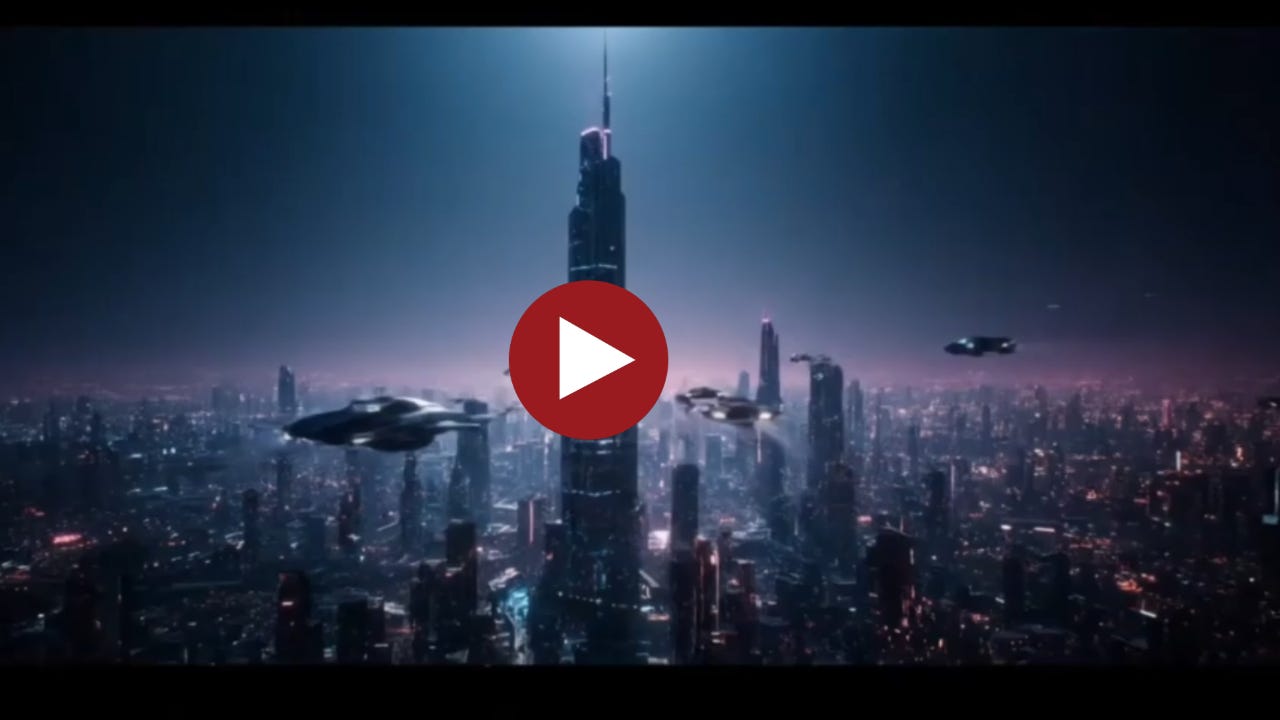Creating a 36-Second AI Film Took Me 5 Hours (And 5 Different Tools)
The bottom line: It took me 5 hours and 5 different applications to create a 36-second Blade Runner-inspired video using Google's new Veo 3. The dream of seamless AI video creation is just—a dream.
As someone inspired by science fiction, I jumped at the chance to test Google's state-of-the-art Veo 3 video model when it launched. I wanted to see what a complete novice could accomplish and document the real experience for my Substack and podcast, AI Studios, where I explore AI's impact on business and our future.
The result is a moody, minimal sci-fi short that almost made me consider switching careers to filmmaking. But the fragmented, frustrating creation process reminded me why we're not there yet.
The Reality: Tool Sprawl Everywhere
Here's what it actually took to create one short video:
Video Generation: Google Veo 3
What it does well: Produces impressive 8-second clips with good visual quality
The friction:
Veo 3 is buried across multiple Google products (Gemini, Google Vids, Flow)
Flow (Google's "filmmaker tool") silently defaulted me to the inferior Veo 2
I nearly gave up before realizing I wasn't using the right model
The 8-second clip limit means every narrative video requires multiple generations and stitching
Prompt strategy: I used ChatGPT-4o to brainstorm themes and generate Veo 3 prompts. The AI-to-AI workflow actually worked well here.
Video Editing: Adobe Express + iMovie
Adobe Express handled: Stitching Veo 3 clips together, adding final audio mix, generating captions iMovie's role: Removing Veo 3's default background music, which created disjointed audio when clips were combined
The reality: Even "simple" editing required two different applications because neither handled all aspects cleanly.
Audio Production: QuickTime + Failed AI Experiments
What I tried: Multiple AI voiceover tools including Adobe Express plugins (AI Voiceover Studio, WellSaid Voiceover)
What failed: Tool sprawl struck again—each had different friction points, quality issues, or couldn't capture the moody tone I wanted. Quality of my voice recordingis pretty atrocious.
What worked: Recording my own voiceover in QuickTime Player and manually syncing it.
What I Learned (The Hard Way)
Access is confusing by design: Google spreads Veo 3 across multiple entry points without clear guidance on which to use when. Flow promises advanced controls but delivers a confusing interface.
The 8-second limit kills narrative flow: Every story beat requires a separate generation, making coherent storytelling exponentially harder than single-scene creation.
AI audio tools aren't ready for nuanced work: Despite the hype, I couldn't find an AI voiceover tool that matched the quality and mood control of a basic manual recording.
Integration is the missing piece: Each tool excels at one function but requires manual handoffs to others, creating multiple points of failure and time sink.
The Workflow That Actually Worked
ChatGPT-4o: Theme development and prompt engineering (30 minutes)
Google Veo 3 via Flow: Generate 4-5 eight-second clips (2 hours including learning curve)
iMovie: Strip problematic default audio (20 minutes)
QuickTime: Record custom voiceover (15 minutes)
Adobe Express: Final assembly, audio mixing, captions (2 hours)
Total time: 5 hours for 36 seconds of finished video
What I'd Do Differently
Start with Google Vids instead of Flow for simpler projects
Test AI voiceover tools with sample clips before committing to full workflow
Plan for the 8-second limit upfront—write scenes that work within this constraint
Budget significantly more time than traditional video editing
The Bigger Picture
This experience reveals both AI video's incredible potential and its current limitations. The individual outputs from Veo 3 genuinely impressed me. But the fragmented ecosystem means we're still years away from the seamless "text-to-film" experience that AI companies promise.
For now, creating AI video content requires the patience of a tinkerer and the workflow planning of a project manager. The tools are powerful but not yet integrated enough for mainstream adoption.
Bottom line: If you're willing to invest the time and navigate multiple platforms, you can create genuinely compelling content. Just don't expect it to be quick or simple—yet.
This experience is part of my ongoing exploration of AI tools at AI Studios. What's your experience with AI video creation? The fragmentation frustrates me, but the creative possibilities keep me coming back.




